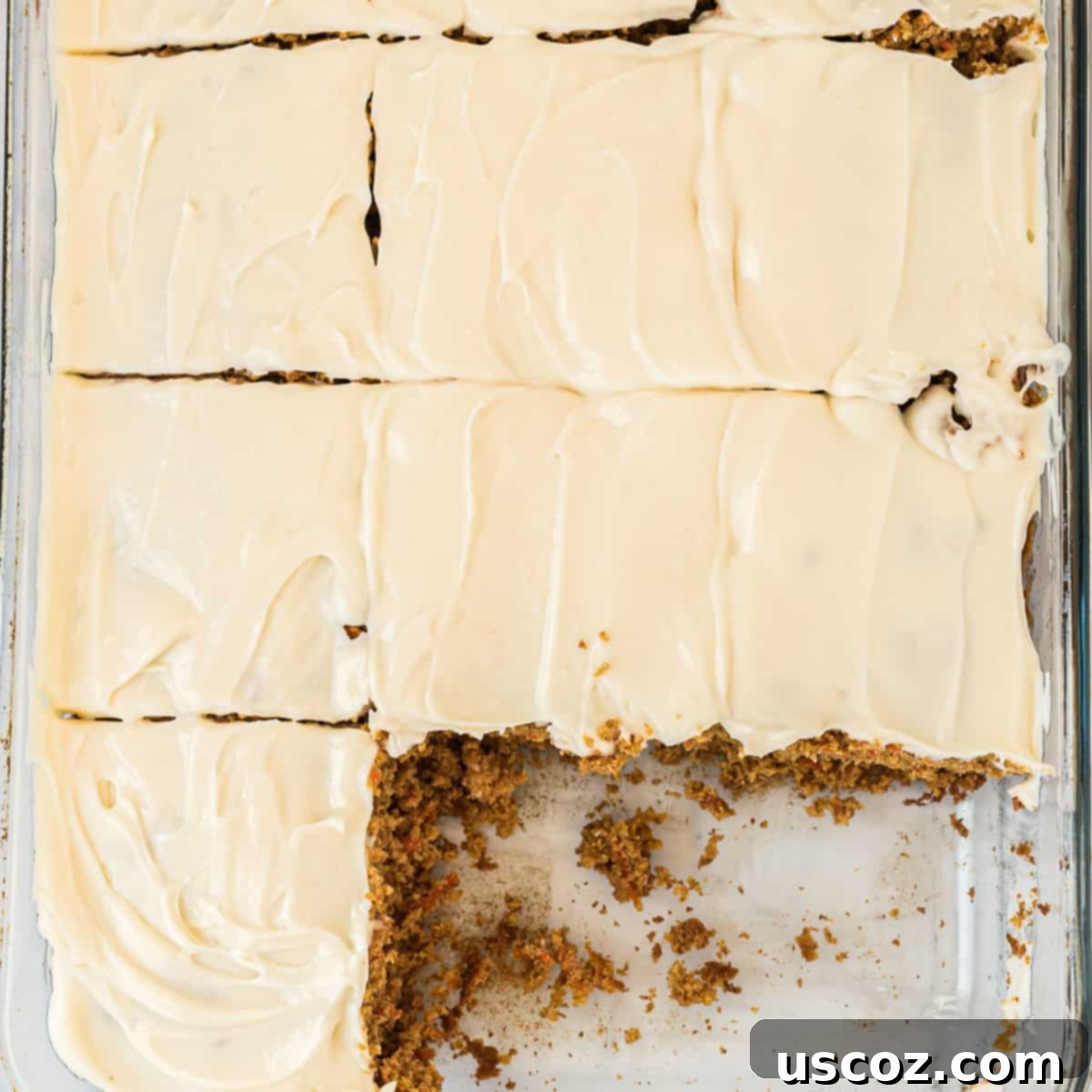The Ultimate Gluten-Free Carrot Cake Recipe: Made Easy with Oat and Coconut Flour & Cream Cheese Frosting
Unlock the secret to the best gluten-free carrot cake recipe with luscious cream cheese frosting. This simple yet incredibly delicious cake uses only readily available oat flour and coconut flour for a perfect texture every time!
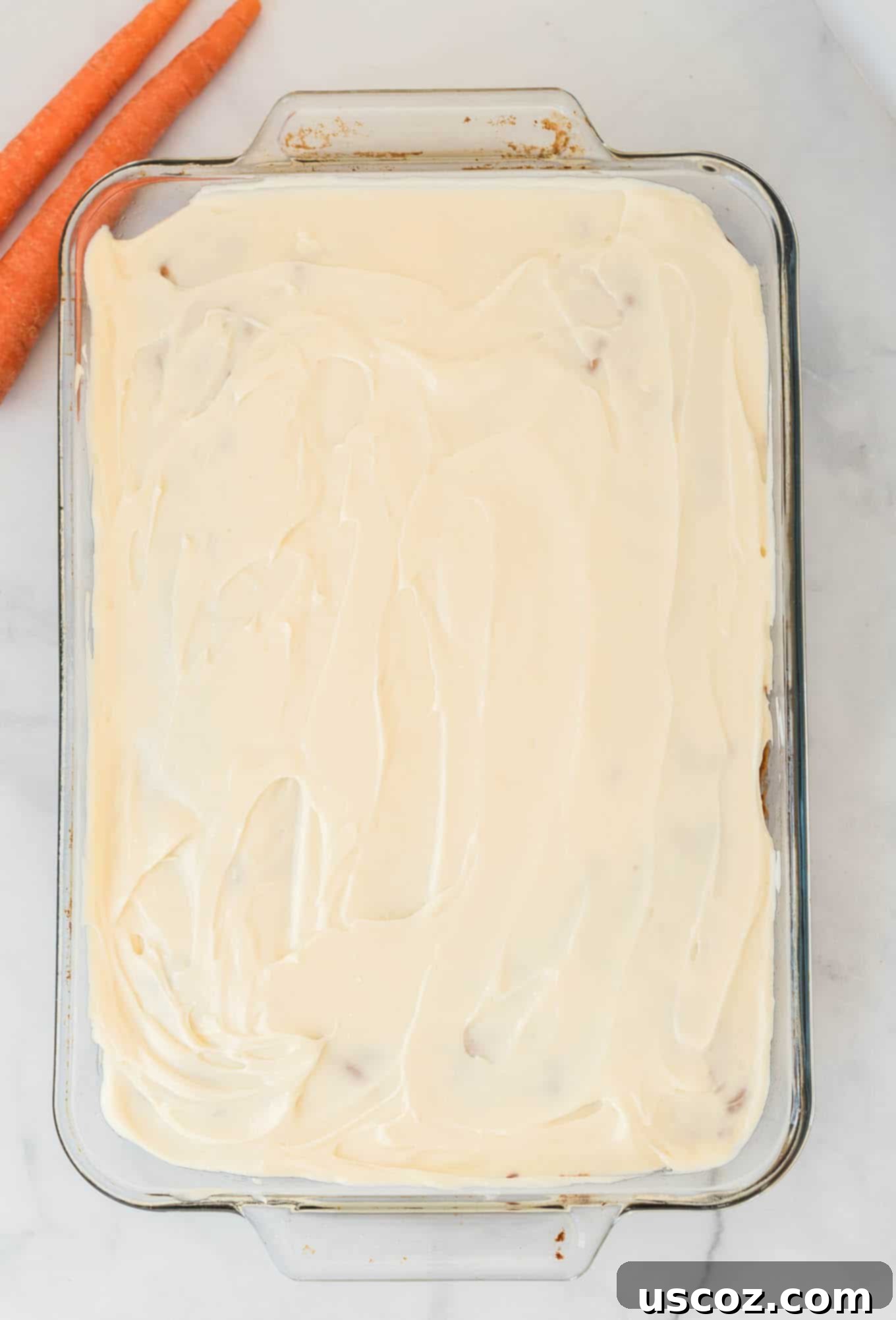
With holidays like Easter often highlighting delicious baked goods, this **Gluten-Free Carrot Cake** has been at the forefront of my thoughts – and for good reason! I’m genuinely thrilled to finally share this extraordinary recipe with you, as it truly feels like I’ve cracked some kind of top-secret baking code.
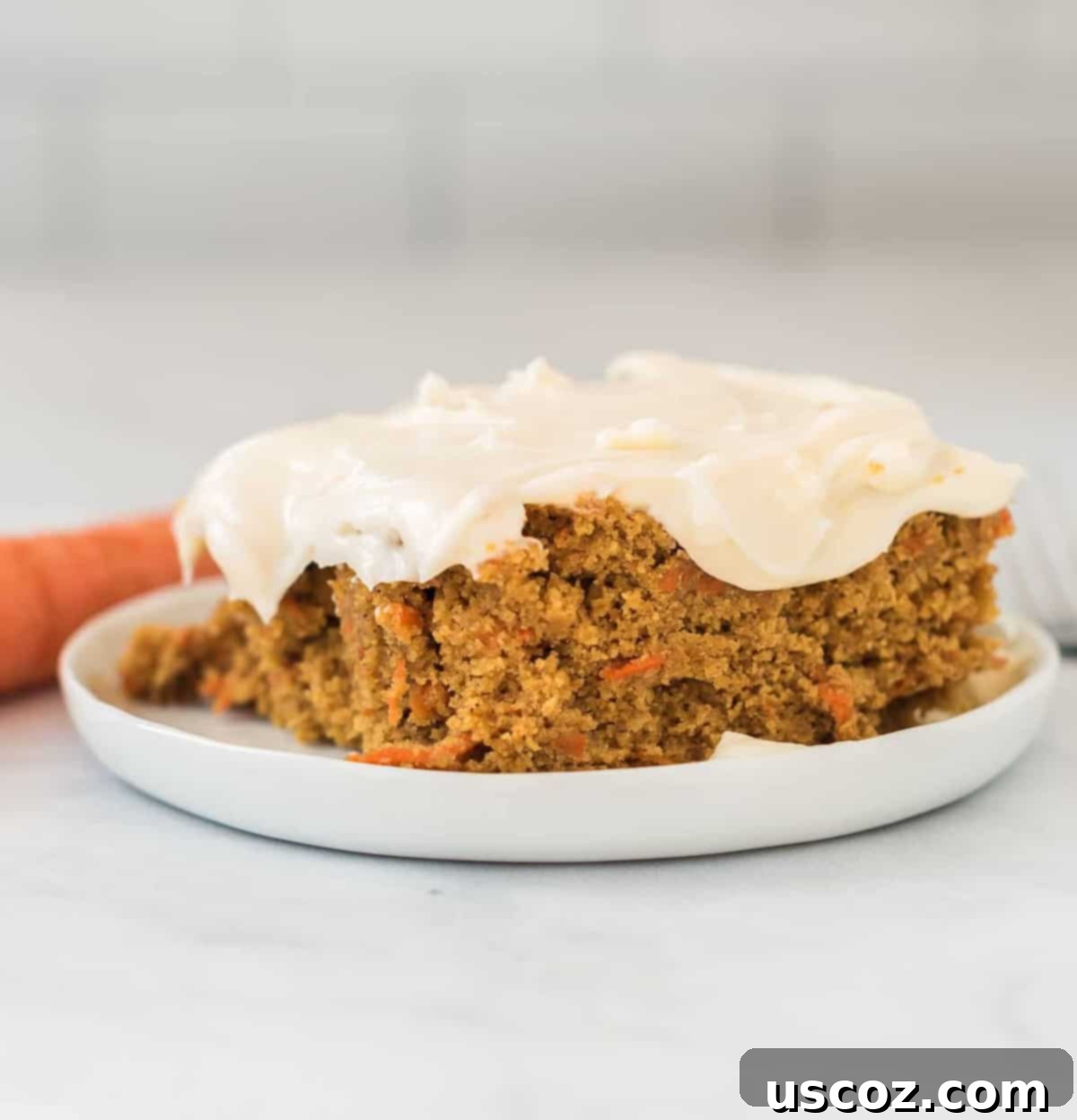
This “code” has revealed the path to creating the most epically delicious **gluten-free cake** you’ll ever taste, all without relying on hard-to-find flours or obscure ingredients. My goal was to make gluten-free baking accessible and enjoyable for everyone, and this carrot cake delivers on that promise beautifully.
Crafting the Perfect Gluten-Free Carrot Cake: Simplicity Meets Flavor
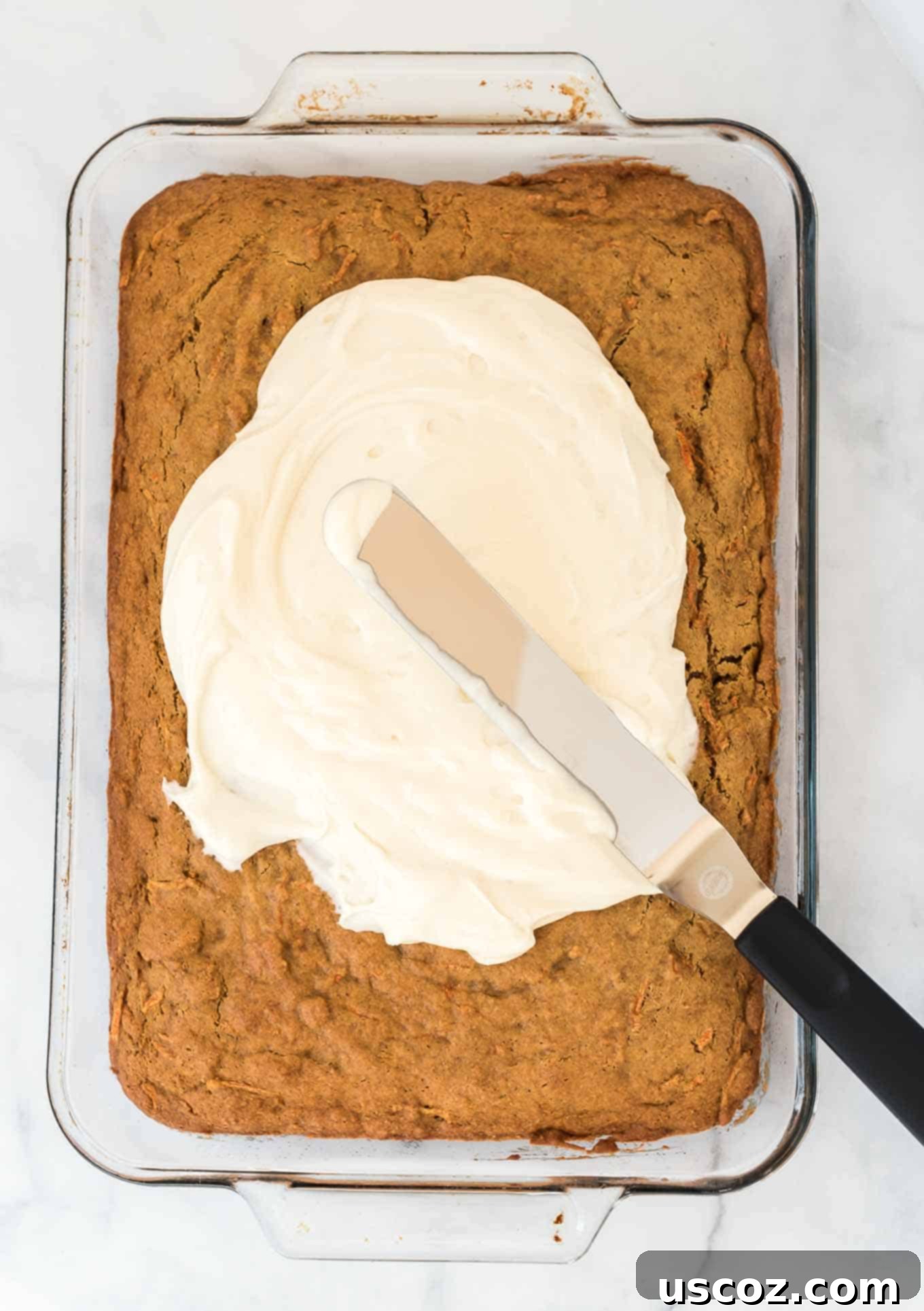
While I don’t personally experience gluten intolerance, I’m constantly searching for innovative and easy methods to help my readers enjoy incredible gluten-free desserts. I know that many individuals either manage gluten intolerance or simply prefer to incorporate less gluten into their daily diets for various health reasons.
This **gluten-free carrot cake** is so profoundly delicious that it can be enjoyed by everyone, regardless of whether they follow a gluten-free diet or not. Its rich flavor, tender crumb, and perfect spice blend make it an instant favorite for any gathering or a delightful treat for yourself.
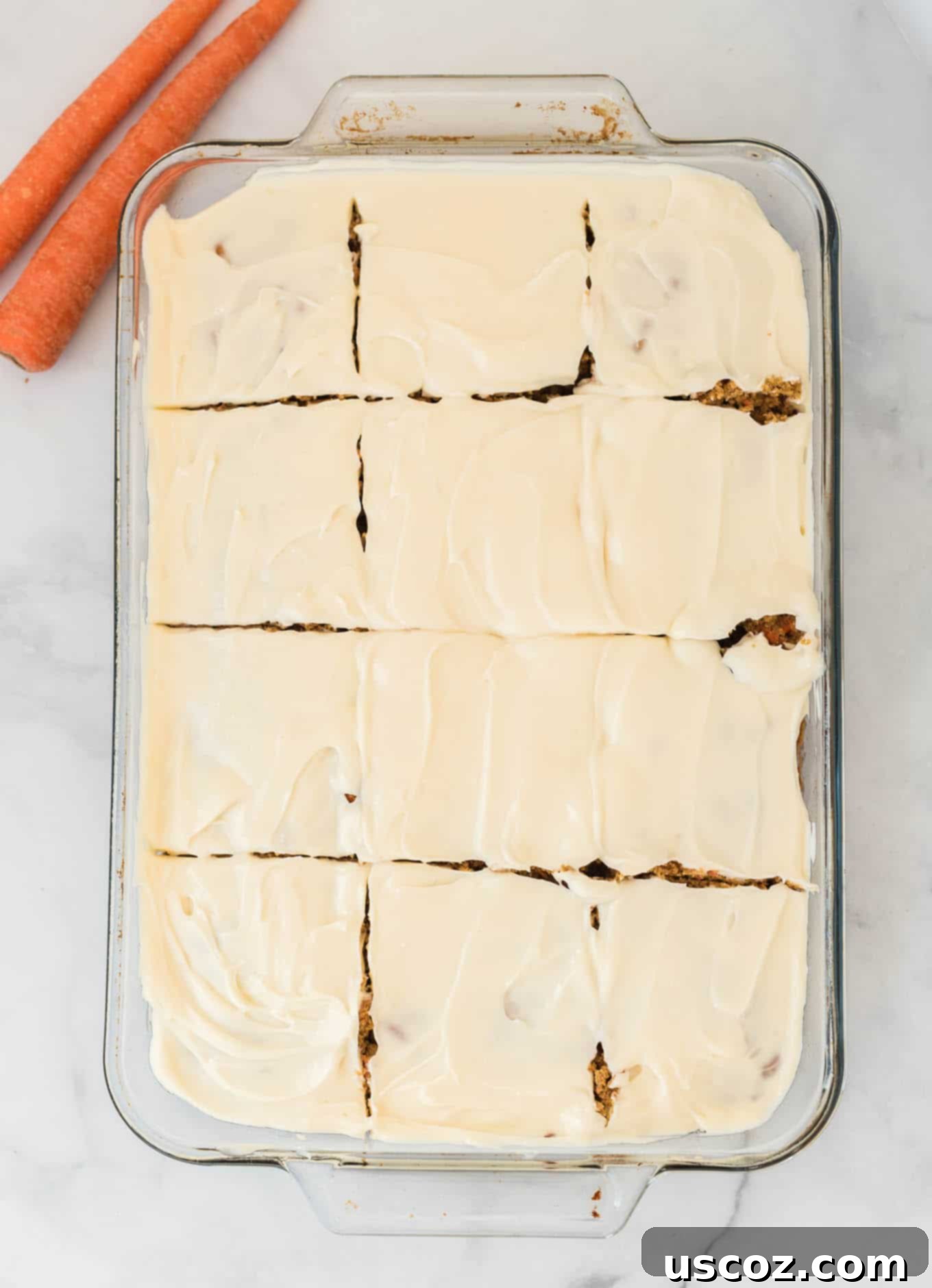
The journey to this recipe began last fall when my husband requested a carrot cake for his birthday. I decided it was the perfect opportunity to challenge myself: could I create a **gluten-free carrot cake** that truly rivaled traditional versions in taste and texture? To my delight, I even had all the necessary ingredients already stocked in my kitchen, a true testament to the simplicity of this recipe!
While I’ve successfully tackled other gluten-free delights like gluten-free mug cakes and gluten-free cookies, developing a full-sized cake presented a new and exciting challenge. The goal was always to achieve that quintessential moistness and perfect crumb that makes carrot cake so beloved.
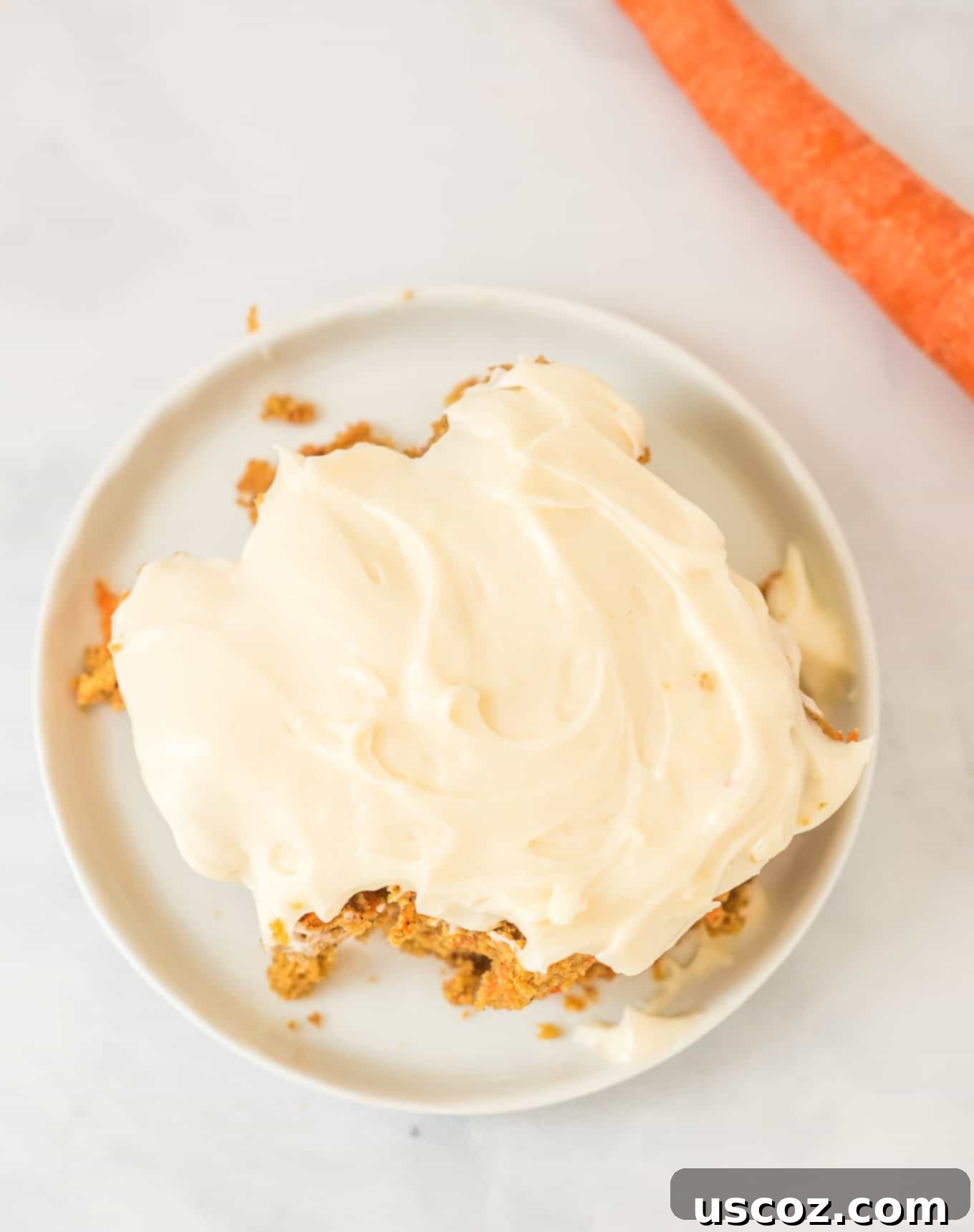
The Problem with “Gluten-Free Flour Blends” and My Simple Solution
A quick search on the internet for **gluten-free carrot cake recipes** often yields a common hurdle: almost every single one calls for the somewhat vague “gluten-free flour blend.” While convenient for some, I have two primary issues with relying on these blends:
- **Inconsistent Results:** Each gluten-free flour blend on the market is formulated with a different combination of flours (rice flour, tapioca starch, potato starch, sorghum flour, etc.). These varying compositions can significantly affect the final texture, moisture, and density of your cake. Without specifying the exact brand and type, results can be unpredictable, leaving bakers frustrated.
- **Accessibility and Cost:** Specialty gluten-free flour blends can often be difficult to find in standard grocery stores, requiring trips to specialized health food shops. Moreover, they are frequently more expensive than purchasing individual gluten-free flours.
My mission for this recipe was clear: to create a **gluten-free carrot cake** using the two simple, reliable, and accessible flours I consistently turn to for all my gluten-free baking: coconut flour and oat flour. This approach ensures consistent, delicious results every time, without the fuss or expense.
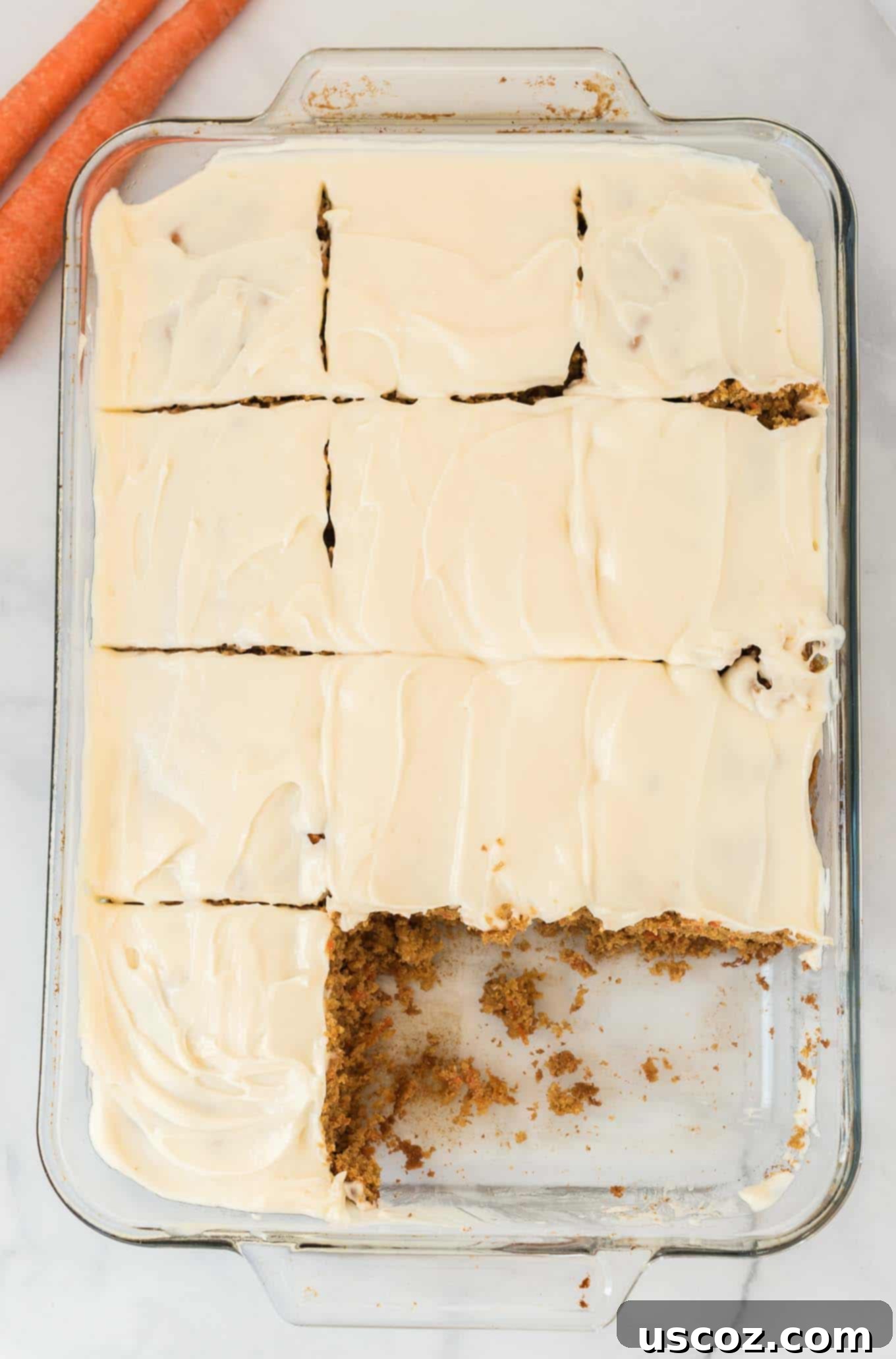
Why Oat Flour and Coconut Flour are the Perfect Pair for Gluten-Free Baking
Choosing **oat flour** and **coconut flour** for this carrot cake was a deliberate decision based on their unique properties and accessibility. **Coconut flour** is easy to find in most major supermarkets and is quite economical. It’s incredibly absorbent, which means you only need a small amount, and it contributes a lovely tenderness and richness to baked goods. Its natural sweetness and subtle coconut flavor enhance the overall profile of the cake without overpowering the classic carrot cake spices.
**Oat flour** is another fantastic and versatile gluten-free option. You can purchase certified gluten-free oat flour, or, even better, easily make your own at home! Simply take certified gluten-free rolled oats (this is crucial for those with celiac disease to avoid cross-contamination) and grind them in a high-speed blender or food processor until they reach a fine, flour-like consistency. This DIY method makes oat flour incredibly cost-effective and ensures you always have a fresh supply. Oat flour provides structure, a slightly nutty flavor, and a satisfying chewiness that contributes to the cake’s excellent texture.
Together, these two flours create a harmonious balance, yielding a moist, flavorful, and perfectly textured cake that truly stands out in the world of **gluten-free desserts**. They absorb moisture beautifully, preventing the cake from becoming gummy or dry, which can sometimes be a challenge in gluten-free baking.
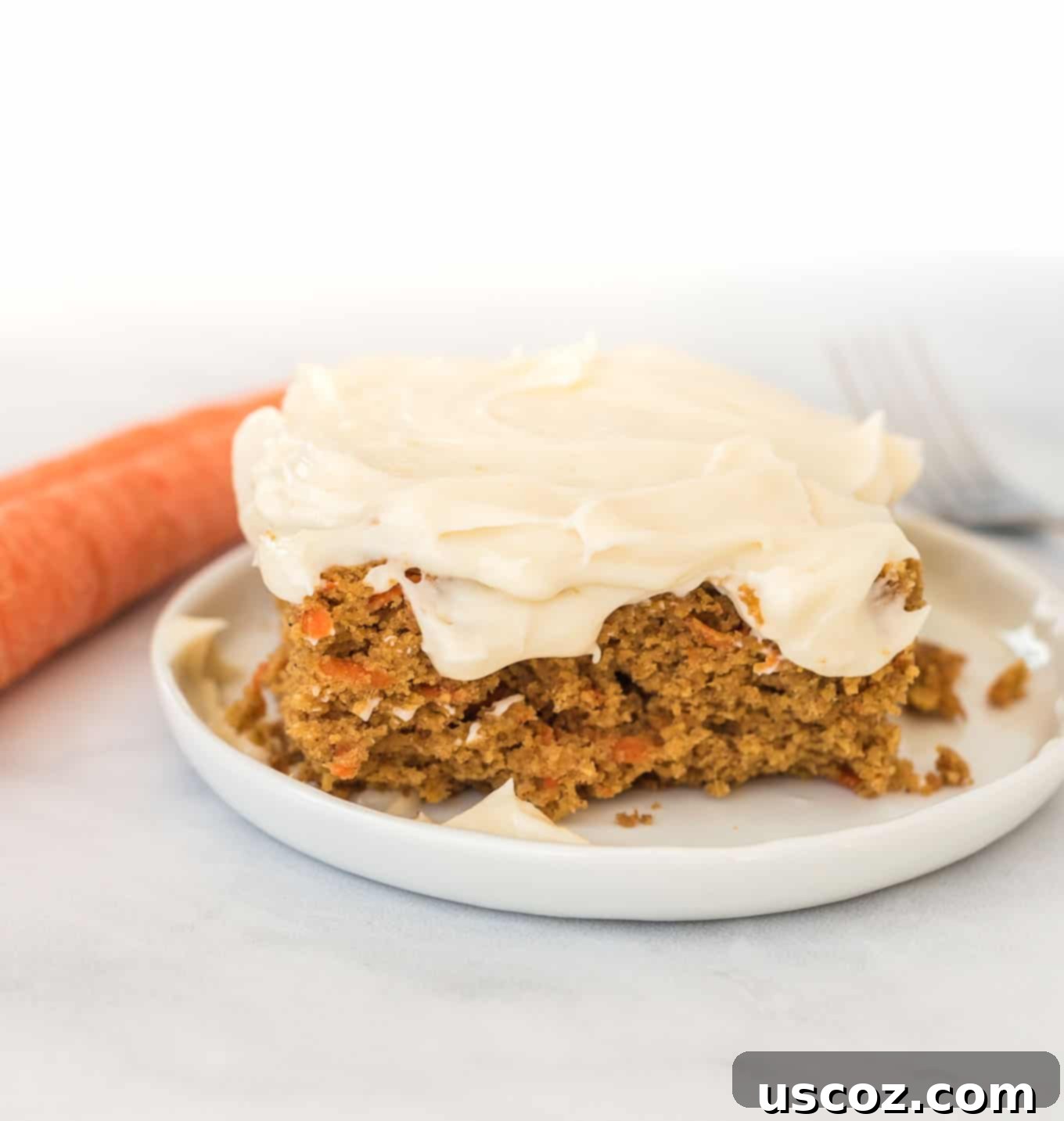
The Unbelievable Texture and Flavor That Will Surprise You
The texture of this **gluten-free carrot cake** is absolutely perfect. It’s incredibly moist, tender, and boasts a wonderfully rich crumb that makes it indistinguishable from traditional carrot cake. Many people, even those who regularly eat gluten, are genuinely surprised when they learn this cake is gluten-free. It truly defies expectations.
Don’t just take my word for it! Here’s a glowing testimonial from a delighted baker:
“Delicious! Made it twice in a week. It’s that good. We aren’t even a GF household. Can’t even tell it isn’t made with regular flour – it’s got a great crumb and flavor and improves with age.”
And if it’s even possible, this cake gets even better after a night in the fridge! The flavors have time to meld and deepen, and the cream cheese frosting sets beautifully, resulting in an even more sublime dessert. In my opinion, carrot cake always benefits from a little chill time. I cannot say enough good things about this recipe – it’s truly a keeper!
Another happy baker shared their experience:
“I always have a hard time following recipes and getting the results I want but this one was PERFECT!!! Delicious!!! – Eva”
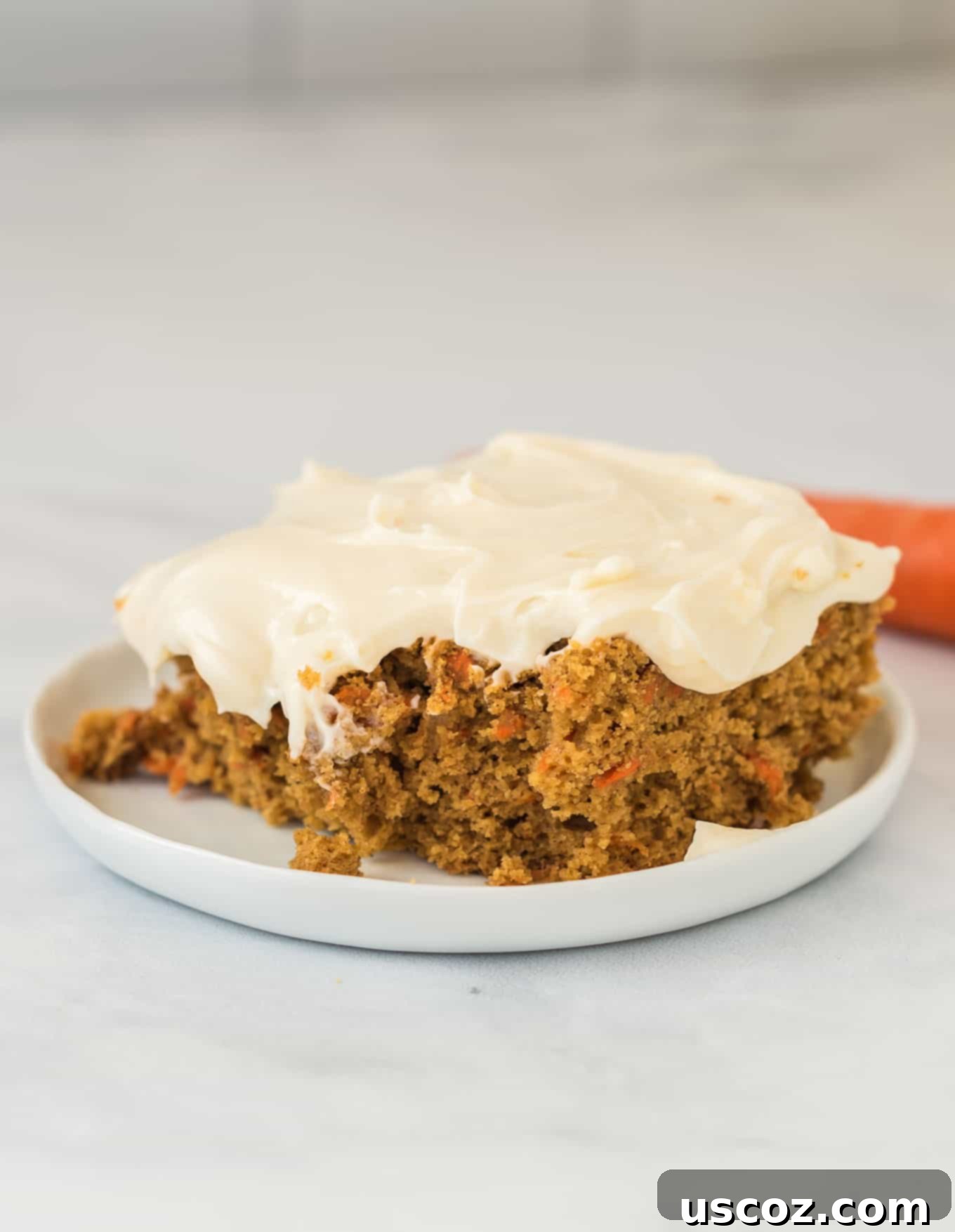
Share Your Creation and Request Your Next Gluten-Free Dessert!
More than anything, I am so incredibly stoked to have created a super easy **gluten-free carrot cake recipe** that truly anyone can enjoy. It’s a testament to the fact that delicious, homemade, allergy-friendly desserts are well within reach for every home baker. This cake is simple to make, uses common ingredients, and delivers on taste and texture every single time.
Are you planning to make this recipe? I would absolutely love to see your creations! Don’t forget to tag me on Instagram @buildyourbite and use the hashtag #buildyourbite with your recipe pictures. Your enthusiasm fuels my passion for developing more fantastic recipes!
And if you have a particular gluten-free cake recipe you’d love to see next, please let me know in the comments below! I’m always open to new ideas and challenges, and I’ll do my best to make it happen for you.
More Irresistible Gluten-Free Desserts
- Flourless Peanut Butter Oatmeal Chocolate Chip Cookies
- Perfect Fluffy Peanut Butter Cookies
- Gluten Free Chocolate Mug Cake
- Gluten Free Oatmeal Chocolate Chip Bars
- Magic Protein Mug Cake
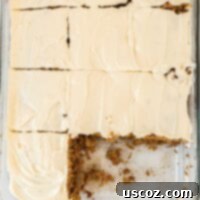
Gluten Free Carrot Cake Recipe
Pin Recipe
Rate Recipe
Print Recipe
Ingredients
For the Carrot Cake
- 2 tablespoons vanilla extract
- 3 cups grated carrots
- 4 eggs
- 2 1/2 cups gluten free oat flour
- 1/2 cup coconut flour
- 1 cup brown sugar
- 1/3 cup applesauce, no sugar added
- 1/2 cup olive oil
- 2 teaspoons baking soda
- 1 1/2 teaspoons baking powder
- 1/2 teaspoon salt
- 1 teaspoon cinnamon
- 1 teaspoon nutmeg
For the Cream Cheese Frosting
- 1/3 cup plain nonfat greek yogurt
- 1/2 cup powdered sugar
- 8 oz cream cheese, softened
Instructions
-
1. Preheat the oven to 350 degrees F (175 C).
-
2. In a large mixing bowl, use a mixer to beat together the shredded carrots, eggs, vanilla extract, olive oil, applesauce, and brown sugar until thoroughly combined and smooth.
-
3. In a separate medium bowl, whisk together the oat flour, coconut flour, baking soda, baking powder, salt, cinnamon, and nutmeg until well combined.
-
4. Gradually add the dry ingredients to the wet ingredients, beating on low speed until just incorporated. Be careful not to overmix.
-
5. Lightly grease a 13 by 9 inch glass baking dish with cooking spray or butter.
-
6. Pour the cake batter into the prepared dish and spread it out into an even layer using a spatula.
-
7. Bake the carrot cake at 350 degrees F for 20-25 minutes, or until a wooden toothpick inserted into the center of the cake comes out clean.
-
8. Allow the cake to cool completely on a wire rack before attempting to frost it. This is crucial to prevent the frosting from melting.
-
9. To make the frosting, begin by beating the softened cream cheese in a bowl until it is light and fluffy, about 2-3 minutes.
-
10. Add the powdered sugar to the cream cheese and beat until just combined and smooth.
-
11. Finally, add the plain Greek yogurt and beat until all ingredients are well mixed and the frosting is creamy. Taste the frosting and add more powdered sugar, if desired, for a sweeter finish. I personally prefer a mildly sweet frosting, but you can adjust to your preference.
-
12. Once the cake is completely cooled, generously frost it with the prepared cream cheese frosting.
-
13. For the best texture and to allow the flavors to fully develop, chill the covered carrot cake in the fridge for at least a few hours, or ideally overnight.
-
14. Serve chilled, perhaps with a scoop of vanilla ice cream or a sprinkle of chopped walnuts for extra crunch.
Notes
Nutrition (Per serving, approx.)
Like this recipe? Rate and comment below!
